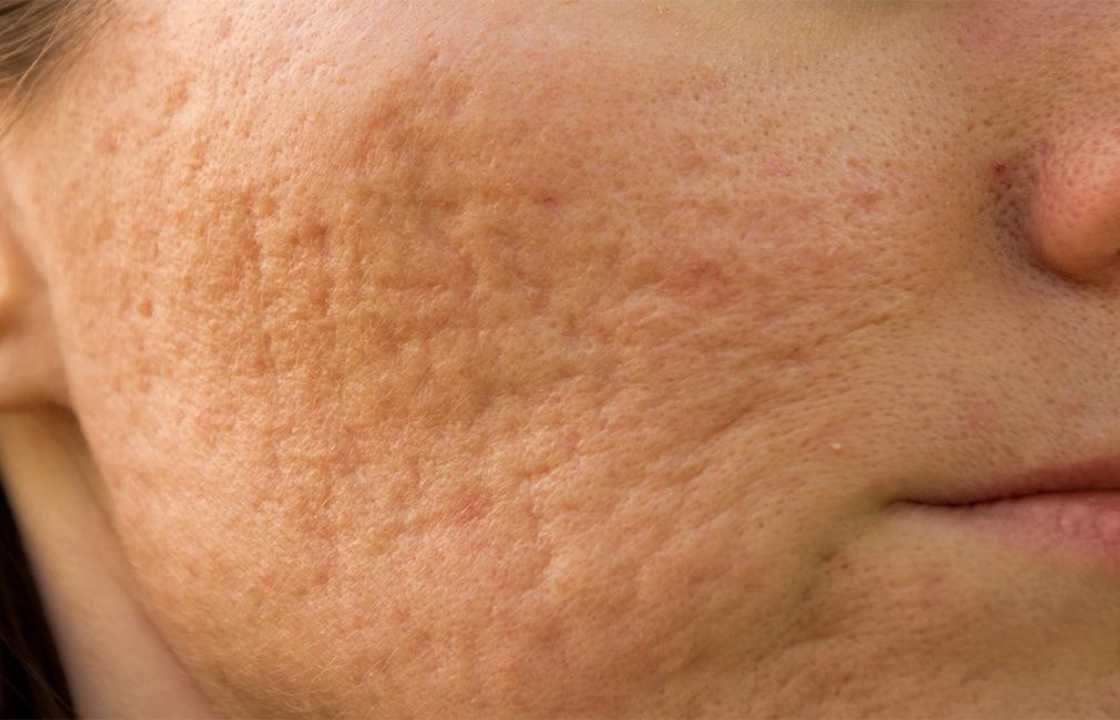Health Care, Insight
What to Know About Rolling Scars
Acne, a widespread skin condition, can leave lasting marks in the form of scars, notably rolling scars. These scars can be both a physical and emotional challenge, particularly for young individuals. Understanding the intricacies of acne scars, particularly rolling scars, and their causes is the first step toward effective intervention and treatment. In this comprehensive guide, we will explore the underlying factors contributing to rolling scars, treatment options, and the importance of selecting the right procedure for your unique skin.
The Anatomy of Acne and Rolling Scars
Acne scarring often stems from the aftermath of inflammatory, painful, or picked-at acne that eventually heals and clears up. These scars can manifest in various forms, with rolling scars being one of the most common types. Rolling scars result from the gradual loss of tissue beneath the skin’s surface, creating an uneven texture that appears wavy or rolling. These skin imperfections can significantly impact one’s confidence and self-esteem, making it important to explore the array of treatment options available to restore your skin’s smooth and flawless appearance. Understanding the underlying causes and the multiple ways to address these scars is the first step towards regaining your skin’s natural beauty and achieving the radiant complexion you deserve.
The Classification of Scars
To address acne scarring effectively, medical experts classify scars into three main categories: atrophic, hypertrophic, and keloidal.
1. Atrophic Scars: These scars are characterized by an indentation below the skin’s surface, often resembling ice pick pits or presenting a rolling, wavy texture. Atrophic scars develop when the skin cannot generate new tissue to balance the scar’s appearance.
2. Hypertrophic Scars: These scars exhibit excessive collagen deposits, causing raised spots on the skin. While they are less severe than keloidal scars, they can still be a source of concern.
3. Keloidal Scars: Keloids are a particularly abnormal and problematic type of scar. These raised, shiny scars can lead to significant emotional and physical distress if left untreated.
Understanding the specific type of acne scar is crucial, as it guides the choice of treatment and management strategies.
Unpacking the Causes of Rolling Scars
Rolling scars, in particular, have unique characteristics that set them apart from other types of scars. They occur due to bands of scar tissue that form beneath the skin, imparting a rolling and uneven appearance to the skin’s surface. Dermal tethering to the subcutis tissue is responsible for their development. These scars typically span 4 to 5 millimeters in width and create a rolling or undulating appearance, often resembling the letter “M.”
Tailoring the Treatment for Rolling Scars
Rolling scars, while challenging, are manageable. The approach to treatment depends on various factors, including your age, overall health, the type of scar, and your response to different treatment modalities. The overarching objective of treating post-acne scars is to improve the skin’s condition rather than seeking their complete elimination.
Several treatment options are available for rolling scars, each with its unique benefits and considerations:
1. Chemical Peels: Chemical peels involve the application of a chemical solution to the skin’s surface to remove damaged layers. Rolling scars respond well to mild and medium-depth peels, including alpha hydroxy acids, salicylic acid, and Jessner’s solution. These peels help rejuvenate the skin, promoting a smoother texture.
2. Dermabrasion and Microdermabrasion: Dermabrasion and microdermabrasion are facial resurfacing techniques that physically remove damaged skin layers to stimulate skin recovery. These procedures use different instruments and execution techniques, each offering distinct advantages in addressing rolling scars.
3. Micro-Needling: Micro-needling is a minimally invasive therapeutic technique employed for skin rejuvenation. During the procedure, a micro-needling device with specialized features exfoliates the skin, encouraging the formation of new collagen. Skin experts often combine micro-needling with other surgical procedures for enhanced results.
4. Dermal Grafting: Skin grafting is utilized to temporarily or permanently cover superficial defects. It involves transplanting skin from one part of the body to another to protect the host bed from further trauma, acting as a crucial barrier against infection.
5. Subcision: Subcision is a surgical procedure that employs a specialized needle to release sub-dermal bands responsible for tethering rolling scars. By releasing these tethered scars, new collagen can form beneath the scar, gradually improving the skin’s surface contour. Deeper and more noticeable rolling scars often exhibit more dramatic improvements after subcision therapy.
6. Cryotherapy: Cryotherapy involves freezing scarred tissues, causing them to die and eventually fall off. However, one potential risk of this procedure is skin lightening in the treated area, resulting in a mismatch with the rest of your body.
In addition to the mentioned treatments, there are several other viable options for addressing rolling scars, including combined therapies, laser resurfacing, light therapies, autologous fat transfer, and topical creams.
It’s essential to note that the primary goal when seeking treatment for acne scars is to enhance the skin’s appearance rather than completely eliminating the scars. Choosing the right procedure tailored to your specific skin type and the severity of the scars is the initial step toward achieving optimal results.
Conclusion: A Path to Healthier Skin
Acne and its associated scars, such as rolling scars, pockmarks, and hypertrophic scars, can be physically and emotionally distressing. These skin imperfections often leave individuals feeling self-conscious, but with a comprehensive understanding of these scars, their causes, and the diverse range of treatment options available, it is possible to embark on a journey toward healthier, more radiant skin. The choice of the right treatment procedure, whether it’s laser therapy, chemical peels, microneedling, or topical creams, and the guidance of experienced dermatologists can make all the difference in your quest for smoother, scar-free skin. Don’t let rolling scars hold you back – embrace the possibilities of effective treatment and a brighter, more confident you. Your skin’s potential for improvement is boundless, and there’s no need to let scars define your self-esteem any longer.

